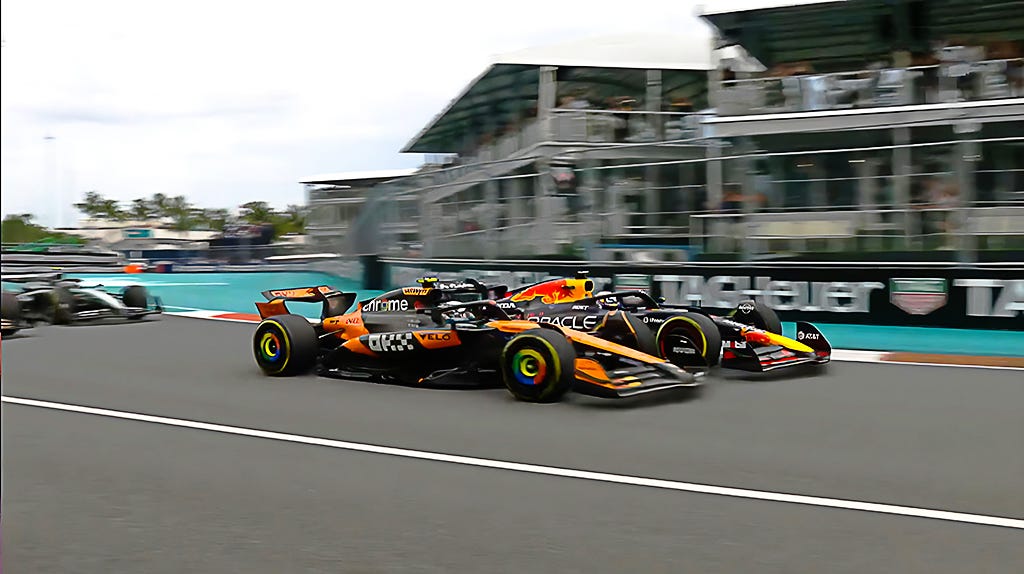Jolyon Palmer Spills the Beans
Thankfully, now we have some clarity about the new racing guidelines.
Complaining about the FIA should be included in the starter pack for every new Formula 1 fan. After the Saudi Arabian Grand Prix, I complained that the new racing guidelines are not publicly available. As a result, we, the fans, are left in the dark and are unsure of the criteria by which we should judge a given incident.
Thankfully, we now have some clarity, though not due to the governing body, of course.
Jolyon to the Rescue
As I suspected in my salty post regarding the Piastri-Verstappen incident in Jeddah, the Drivers' Standards Guidelines have changed. Jolyon Palmer confirmed this in his analysis of the aforementioned Turn 1 argy-bargy.
Now, if you’re overtaking on the inside to take the racing line and shove your competitor off the track, you simply need to be alongside them at the apex. Alongside is defined as having your front wheel level with your rival’s mirror. This is why Oscar Piastri adhered to the guidelines when he forced his way past Max Verstappen in Jeddah and Andrea Kimi Antonelli in the Miami sprint.
The change has clearly made it easier to overtake on the inside than before.
Outside Is a Different Story
So, half of the overtaking question was answered after Jeddah, and the other part became clear in Miami.
Verstappen has a tendency to fight for his position like a wounded beast for its life. I love it. The Dutchamn holding off the superior McLarens made the race incredibly enjoyable to watch. And it started right from the get go.
Verstappen went deep in Turn 1, opening an opportunity for Lando Norris to execute a switchback. The McLaren driver got the better exit and went side by side with his friend and foe into Turn 2. Unfortunately, he found himself on the outside, and historically, that hasn’t ended well for him.
Verstappen either intentionally or accidentally – given that he had to correct the oversteer, threw Norris out of the track as club security ejects an aggressive, drunken client. The Brit was forced to take an avoiding action to prevent a crash similar to the one we had seen between Kevin Magnussen and Logan Sargeant a year prior. As a result he lost four positions.
After the reviewing the replays, Palmer stated that, he believed the move was okay to him, because Norris hadn’t been significantly ahead. The stewards concurred with the commentator's assessment.
Later in the race, we witnessed a second round between Verstappen and Norris. Once again, the Dutchman pushed his rival nearly entirely off the track, while still leaving enough room for him to stay within the track limits. Palmer approved of this move too. He further explained that, when overtaking on the outside, a driver must have a nose ahead at the apex to be granted space.
Knowledge Is Power
Now that I have a clearer understanding of the guidelines, I commend them. I think they represent a step in the right direction. Instead of the often vague phrase “ahead at the apex,” we now have straightforward criteria: a front wheel alongside a mirror and a front wing ahead. When applying these criteria to assess all the incidents described above, they seem to be crystal clear cases, and much of the outrage on social media appears to be misguided at best.
Truth be told, how can you not be misguided? If you haven't read this post, paid attention to Palmer's commentary, or obtained information from another source, how can you know what the guidelines state?
Don't rely on the FIA to inform you.




